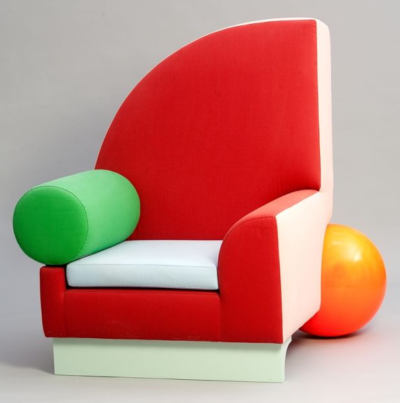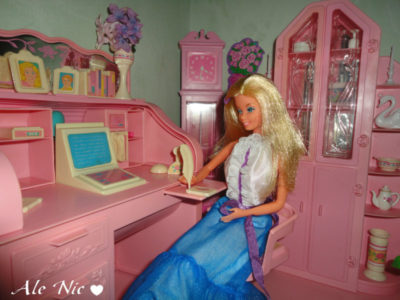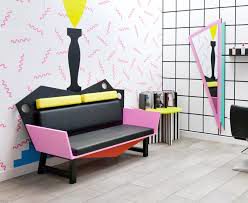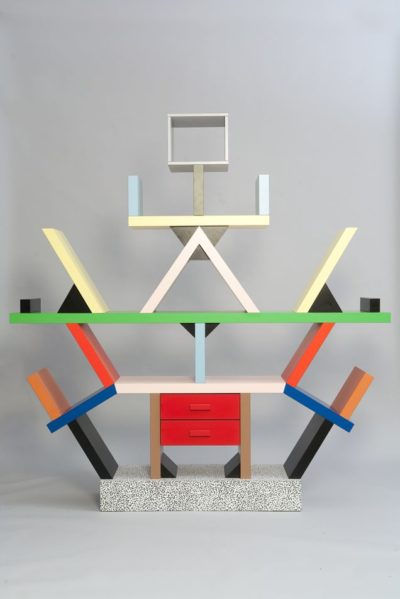
Henry Hiltner is a furniture designer who works at Design Within Reach in Seattle. We source furniture from DWR for a lot of our projects, and love working with Henry because he’s so knowledgeable about the products. We had a fun and very educational conversation about his job at DWR and about his own design work.

Lindsey Runyon: How long have you worked at Design Within Reach?…or, do you call it Design Within Reach?…Do you just call it DWR now?
Henry Hiltner: I think everybody pretty much calls it DWR now, unless you’re talking to somebody who hasn’t really dealt with the company, but in general everyone just calls it DWR.
LR: I’m old school. I remember Design Within Reach from way back and it was not called “DWR.” So I still call it ‘Design Within Reach.’ Either way, how long have you worked there?
HH: Almost three and a half years now.
LR: Awesome. Do you sometimes just lay down and sleep on the beds that are for sale?
HH: Hahaha! Uh, personally I don’t….but there may or may not be some of my co-workers who are known to take a nap on the couch…
LR: Who shall remain nameless.
HH: No doubt.
LR: What is your favorite piece of furniture currently for sale there?
HH: Oh, this is a tough one, because they just stopped carrying my favorite as an in-stock item. I still think it’s available, but it was the PK-22; Poul Kjaerholm’s little lounge chair that was a woven wicker with a stainless steel frame.

PK-22 Chair
LR: So, let’s say if we can’t have that…
HH: So, if we can’t have that, definitely one of my favorites, and it’s actually in the same realm is the Paulistano chair, which is Paulo Mendes da Rocha’s chair that he designed for an athletics pavilion in Argentina or something [correction, actually Brazil, close!], and it’s kind of similar. It’s stainless steel single bar that’s all bent and folded so the seat’s cantilevered, and the seat is a leather sling.
LR: Ooo, it sounds cool, I think I know which one you’re talking about.
HH: Yeah, that hangs from the frame…

Paulistano Chari
LR: But for a stadium?! It seems too nice!
HH: It was the lounge seating to go into a sports arena in the sort of lobby areas.
LR: Oh, ok. I was like, “In the bleachers?! Is that where Jay-Z sits when he watches basketball games?”
HH: Right?! Well this was also 1957, and it was in the public spaces and lounges of some kind of athletics arena, but I’m sure they had just normal bleachers…
LR: Yeah, and this was also before the era when you’d get pump nacho cheese on everything. How do you see benefiting your customers in working with designers?
HH: We get a lot of people coming in who either have no idea what they’re looking for, or just like mid-century modern design, or like design. Or, they think they like design, but they don’t know what that means. There are times when we’re able to help direct them towards something, and then there are other times when it’s very clear that they need somebody who can really dive in and help them look at what their options are, and even more often, help them narrow down their options. Often what they really need is somebody who can firmly say, “Well these things aren’t really going to work that well together, but what if we did this instead?”
LR: I would imagine it attracts a really interesting clientele. I feel like the brand, DWR is strong; that the people who like the furniture do know design a little more than the average population, and they care about those iconic designers.
HH: Yeah, definitely. This furniture was all designed and created by some very larger-than-life characters, so by nature, the people who come in to DWR, in general, are pretty design conscious. But while it was created by icons of the design world, I think Design Within Reach furniture is very accessible.
LR: Within reach, is it?
HH: Haha. The furniture may be very clean and minimal, but it’s always warm and approachable. Where some other furniture manufacturers are like, ‘sleek and stark and shiny,’ –and that may be what somebody is looking for– but it’s different from Design Within Reach. At DWR, even though it may be clean and minimal, is still going to be approachable and warmer.
LR: It’s not like, ‘Can I even sit on that?!’
HH: Yeah, exactly.
LR: But more, I CAN sit on that! And I want to!
HH: That’s the big thing with DWR, it’s like, try it out, absolutely! I think it’s good that most people aren’t too cautious about it, but every once in a while they’re like, “Can I sit in this?” –Yeah, you can sit in it, it’s furniture!
LR: Yeah
HH: That’s the point; you’d better be able to sit in it. So, I think the clientele are pretty interesting. They’re people that know what they want, and know what they are doing, they’re also not too full of themselves, not like, ‘it has to be just like this.’
LR: They’re kind of open to the design.
HH: Yeah, I think they’re a little more approachable people, as well.
LR: Yeah, I can definitely see that being the case. So, is furniture approachability the “Within Reach” part of “Design Within Reach”?
HH: Well actually, when Design Within Reach started, it was entirely about having access to those pieces. It had nothing to do with price point, or anything like that. The original meaning of it was simply because these pieces weren’t available…unless you were a designer or an importer, or whatever. And even then, half the time you couldn’t get them legally because there wasn’t any import agreement to do it. So, a lot of things like Carl Hansen, Fritz Hansen, and some Italian makers – you simply couldn’t get.
LR: So as of the last 4 or 5 years, you mentioned that DWR carries no knock-offs.
HH: No knock-offs. We’re going to carry whatever is the authentic piece is. Whatever the licensed piece is. And just in the last couple years, there’s been a big push to start actually collaborating with current designers and bringing new pieces to the market that are DWR exclusives. One that’s really cool that they’re doing right now is collaborating with Jens Risom, who’s one of the Godfathers of mid-century modern, and turns 99 in May. Who’s still designing. Who’s still doing projects for Design Within Reach.
LR: Age 99.
HH: At 99. Well, at 98. Cross your fingers.
LR: Yeah. That’s the thing, you know, in the design world, you don’t retire. You just keep working until you drop dead. [I heard that from Alexa Hampton]
HH: He’s like the last of that old guard who hasn’t dropped dead, and he’s working right now. We’re just releasing a whole new storage system that was a collaboration between Jens Risom and Chris Hardy, Chris Hardy is like, in his 30’s. That’s a collaboration with a true mid-century master and sort of the contemporary equivalent.

Also, DWR’s now constantly working with relatively small or unknown designers to produce pieces for DWR exclusively. One of the pieces, that was actually designed before DWR picked it up, was from Ladies and Gentlemen Studios, which is right here in Seattle. They have a salt and pepper shaker that we’re carrying. So, anyway, there’s a lot. While the bulk of things at DWR are still that mid-century classic stuff…
LR: …there are new things on the horizon.
HH: Now they’re really pushing, they’re really adding pieces that are contemporary, but are still in that mid-century aesthetic.
LR: So, are there any designs that DWR carries that are not mid-century, but they’re also not contemporary? Anything from the 70’s through the 90’s that was designed, that is now considered a classic at all?
HH: Oh, no…We try to ignore that era, uh…hahaha
LR: You try to ignore that terrible era – the Memphis style, or whatever.
HH: Pretty much.
LR: OK I admit there wasn’t a lot of great furniture that came out then…
HH: I’m trying to think of…
LR: Maybe the 70’s. There was cool stuff from the 70’s …?
HH: There’s a few mid-century pieces that are from the 70’s that people don’t realize how late they were…
LR: And 80’s! There was some cool stuff from the 80’s, aren’t there?
HH: The Tizio Lamp, I suppose.

Tizio Lamp
Oh what Henry? You are saying you don’t want any of this?






LR: Well, anyway, so basically you’re sticking with the mid-century classics, and new people who are doing things in the same spirit?
HH: Yeah. Most of the mid-century stuff is from around 1930 – 1970, give or take, with a few outliers.
LR: Nice. What type of sustainability efforts does DWR implement?
HH: Whenever working with manufacturers to create new pieces, DWR is very keen to work with companies that know how to manufacture as ecologically friendly as possible. I have designed and built furniture too, for years, and I’ve always had a very different approach, and I think DWR’s approach is kind of similar. For me, the best way to make a piece of furniture as ecologically friendly as possible is to make it last. Period.
LR: Yes
HH: Doesn’t matter how efficient your systems are, or whatever else. I mean, Ikea’s systems are incredibly efficient. They’re amazing. And they’re actually, per piece, very ecologically friendly for the most part. But. If you design a piece that’s only going to last a year, then, someone’s going to buy, like ten of those over their lifetime.
LR: So you have the waste and resources of making it 10 times, and the garbage of throwing it away 10 times.
HH: Yeah. So, to me, whenever I’m designing or making a piece of furniture, my first priority is to design something that is going to have lasting appeal. It’s got to have lasting appeal, or it’s gonna be trashed or whatever no matter what.
LR: Yeah. It needs to look timeless.
HH: So, I tend to buck trends. And then the flip side of it is using materials that are going to be very solid and hold up over time and with abuse. For my own style, and I think this applies to most DWR stuff as well, a little bit of Wabi Sabi– understanding of how it will age. Because a perfect finish doesn’t age well. A solid wood table can get dinged up and banged up and it eventually, is a patina, as opposed to just being damaged. And that’s why I like good quality leather, is so wonderful because it ages well, it patinas.
I kind of went on a tangent there with my own stuff, but I think that, for the most part applies to the DWR products as well.
LR: I think that’s huge. So, speaking of your own stuff, let’s switch gears here a little bit. You are a furniture designer on the side. So, do you do all custom work, do you have a line of products, or what’s your focus?
HH: I am currently focused on custom work. People come to me with projects and I like filling in the gaps where people aren’t able to find the right kind of piece. Anyone who would like to see the kind of furniture that I do can look at henryhiltner.com. But while custom is my focus, if someone wanted something exactly like any of the pieces shown on my website, I absolutely can produce them as requested.
LR: Tell me about your newest adventures with the airline industry. It would be so fun for me to do the interior design for a private jet…
HH: I’ve been doing a little work with a small aviation company designing airline seating, which is more for commercial airlines than private jets… so far it’s been focused on doing elements of the seating systems. It’s different from interior design in that it is specific to a particular piece. It is furniture design, system design, and hardware design.
LR: So as a furniture designer, you would be designing one element, and the interior design part would be bringing all the needed elements together.
HH: Yeah, there’s décor, the materials and lighting, which is what you would address. But then you’ve got the seats themselves that have to be designed. The work I’ve done is focused on elements within the seating itself.
LR: Which elements? Like the tray table, or…
HH: Well, I can’t talk too much about it…
LR: It’s ok, if you can’t talk about it…If it’s top secret, I wouldn’t pry.
HH: It’s all industrial design and product design, which is what my background really is. Airline stuff is interesting, because I’ve always been in the Seattle area, and it’s like hard to not pay attention to airline stuff.
LR: Yeah, it’s huge, for sure.
HH: I grew up with it. I had uncles who were pilots and that kind of thing.
LR: Awesome, and have you ever done anything for boats or yachts or sailboats at all?
HH: Yeah, I’ve done a little bit. I grew up on old wood sailboats. Not exactly like nice pleasure craft. More like, heavy working wood sail boats. My dad’s a marine carpenter. He worked as the lead carpenter for forever at Foss Maritime, which is the tugboat company in town. So, along the way, I’ve done various little projects here and there for boats.
LR: Well, who knows what’s going to come up. It sounds like it’s an exciting point for you!
HH: It’s definitely a point of transition.
LR: New adventures. Well thank you very much Henry!
HH: Thank you
